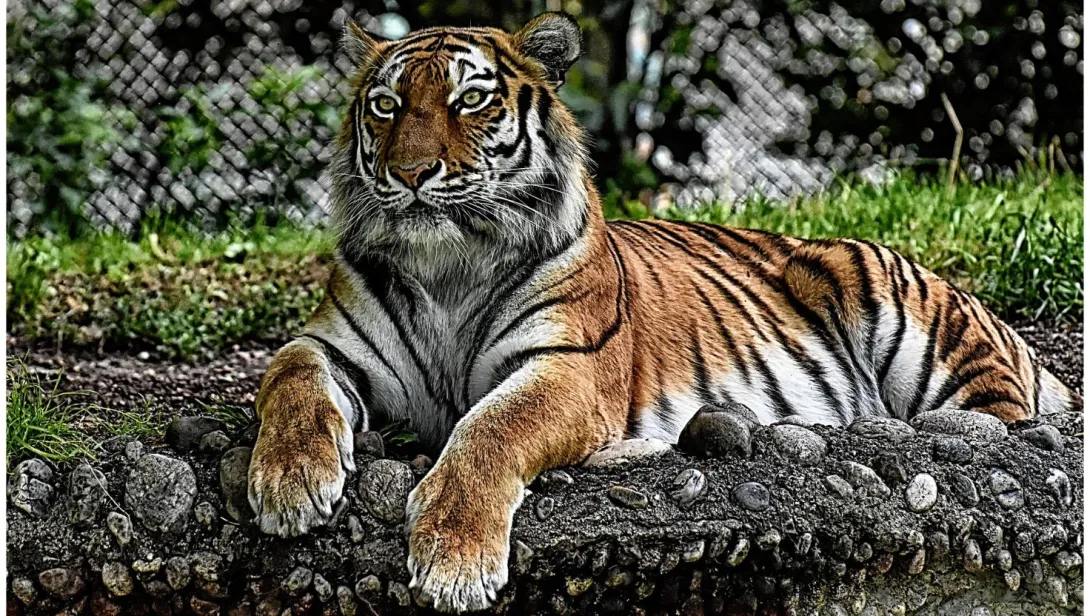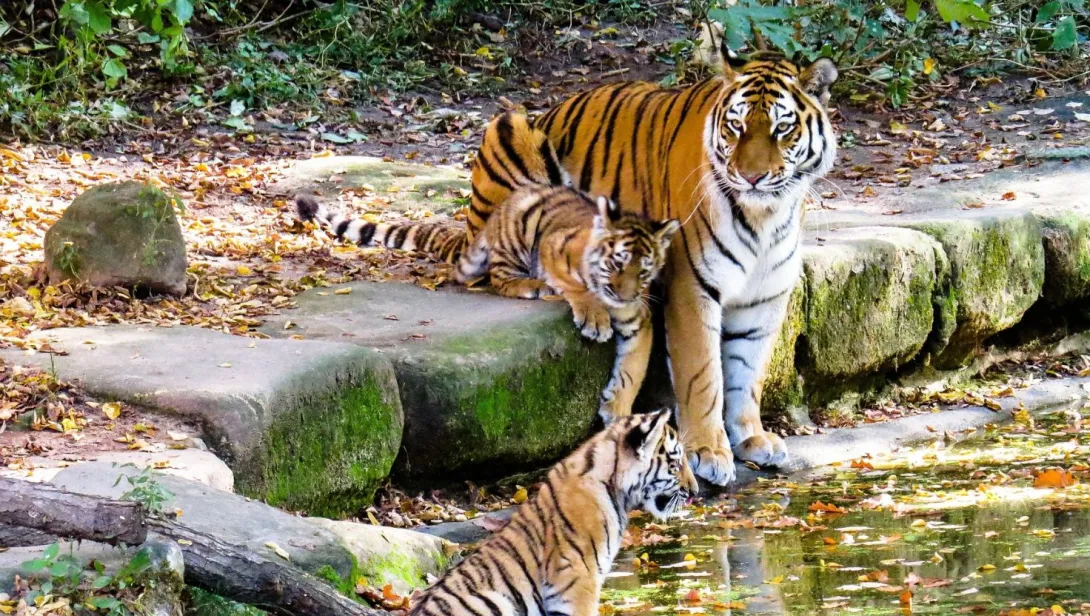Skip to main content
Introduction
- Tigers are the largest of all big cat species and are scientifically called Panthera tigris.
- They are known for their striped fur, which is unique to each individual, much like human fingerprints.
- Tigers are apex predators, meaning they are at the top of the food chain in their ecosystems.
Physical Characteristics
- Tigers are powerful and muscular, with males weighing up to 660 pounds (300 kg) and females up to 370 pounds (170 kg).
- They have retractable claws and sharp teeth designed for hunting and tearing prey.
- Tigers have a strong bite force of around 1,050 psi, one of the strongest among big cats.
- Their striped coat provides camouflage in their natural habitats, such as forests and grasslands.
Habitat and Distribution
- Tigers are native to Asia, with populations found in countries like India, Russia, Indonesia, and Malaysia.
- They inhabit a variety of environments, including tropical forests, mangroves, grasslands, and snowy regions.
- The Siberian tiger is the largest subspecies and lives in the cold climates of Russia and China.
- The Bengal tiger is the most numerous subspecies and is primarily found in India and Bangladesh.
Diet and Hunting
- Tigers are carnivorous and primarily hunt large prey such as deer, wild boar, and buffalo.
- They are solitary hunters and rely on stealth and strength to ambush their prey.
- A tiger can consume up to 40 kg (88 lbs) of meat in one meal.
- They are nocturnal hunters, preferring to hunt at night when their prey is less alert.
Behavior and Communication
- Tigers are solitary animals, except during mating season or when a mother is raising her cubs.
- They are territorial and mark their territory with scent markings and scratch marks on trees.
- Tigers communicate through vocalizations such as roars, growls, and chuffing sounds.
- They are excellent swimmers and often cool off in water during hot weather.
Reproduction and Lifespan
- Female tigers give birth to 2 to 4 cubs after a gestation period of about 3.5 months.
- Tiger cubs are born blind and rely on their mother for protection and nourishment.
- Cubs stay with their mother for 2 to 3 years before becoming independent.
- Tigers have a lifespan of 10 to 15 years in the wild and up to 20 years in captivity.
Conservation Status
- Tigers are classified as Endangered on the IUCN Red List due to habitat loss and poaching.
- There are only around 3,900 wild tigers left in the world, down from 100,000 a century ago.
- They are threatened by poaching for their skin, bones, and other body parts, which are used in traditional medicine.
- Conservation efforts, such as Project Tiger in India, have helped stabilize some tiger populations.
Cultural Significance
- Tigers are cultural icons in many Asian countries, symbolizing power, courage, and strength.
- They are featured in mythology, literature, and art across cultures.
- The tiger is the national animal of India, Bangladesh, Malaysia, and South Korea.
- In Chinese culture, the tiger is one of the 12 zodiac animals and represents bravery.
Fun Facts
- Tigers can leap up to 10 feet (3 meters) in the air and run at speeds of up to 40 mph (65 km/h).
- They have a white spot on the back of their ears, which is believed to act as a false eye to deter predators.
- Tigers are highly adaptable and can survive in a wide range of environments, from snowy forests to hot jungles.
- Unlike most cats, tigers enjoy water and are often seen swimming and playing in rivers.
- Tigers have a unique stripe pattern on their fur, which helps researchers identify individuals in the wild.
- They are keystone species, playing a crucial role in maintaining the balance of their ecosystems.
Subspecies of Tigers
- There are 6 living subspecies of tigers: Bengal, Siberian, Indochinese, Malayan, South China, and Sumatran.
- The Bengal tiger is the most common subspecies, found primarily in India and Bangladesh.
- The Siberian tiger is the largest and lives in the cold forests of Russia and China.
- The Sumatran tiger is the smallest subspecies and is critically endangered.
Threats to Tigers
- Habitat loss due to deforestation and human encroachment is a major threat to tigers.
- Poaching for their skin, bones, and other body parts is a significant cause of their decline.
- Human-wildlife conflict often leads to tigers being killed when they stray into human settlements.
- Climate change is affecting their habitats, particularly in regions like the Sundarbans mangrove forest.
Conservation Efforts
- Project Tiger, launched in India in 1973, has been instrumental in increasing tiger populations.
- Anti-poaching initiatives and stricter wildlife protection laws have helped reduce illegal hunting.
- Habitat restoration projects aim to create safe and sustainable environments for tigers.
- Global awareness campaigns highlight the importance of tiger conservation and encourage public support.

